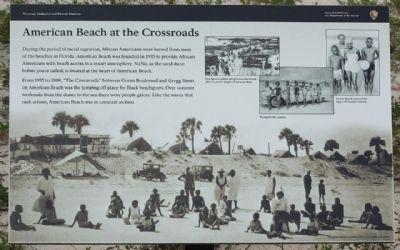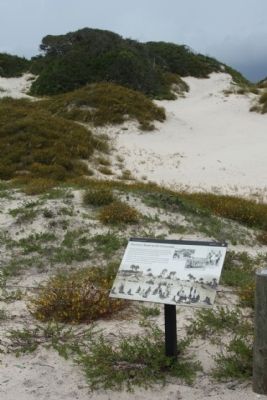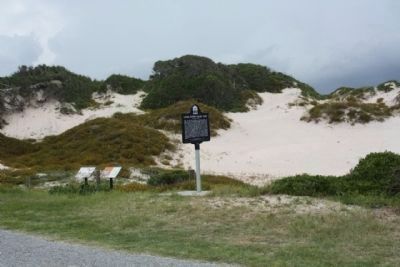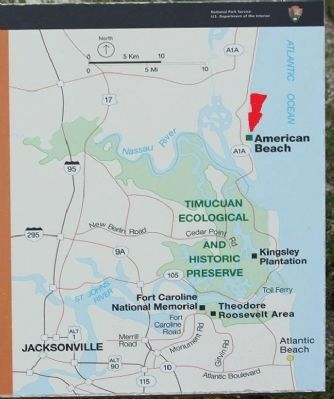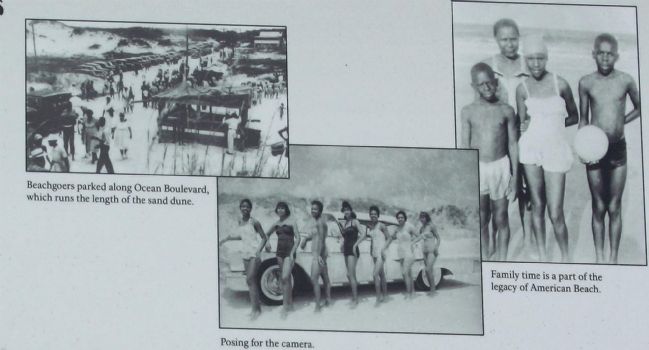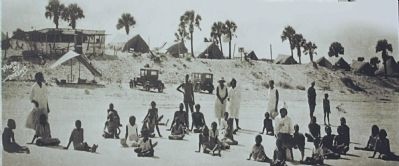American Beach in Nassau County, Florida — The American South (South Atlantic)
American Beach at the Crossroads
From 1935 to 2000, “The Crossroads” between Ocean Boulevard and Gregg Street on American Beach was the jumping off place for Black beachgoers. Over summer weekends from the dunes to the sea there were people galore. Like the waves that rush ashore, American Beach was in constant motion.
Erected by National Park Service, U.S. Department of the Interior, Timucuan Ecological and Historic Preserve.
Topics. This historical marker is listed in these topic lists: African Americans • Entertainment. A significant historical year for this entry is 1935.
Location. 30° 34.378′ N, 81° 26.699′ W. Marker is in American Beach, Florida, in Nassau County. Marker is on Ocean Blvd near Lewis Street, on the right when traveling south. Located at the Nana sand dune. Touch for map. Marker is in this post office area: Fernandina Beach FL 32034, United States of America. Touch for directions.
Other nearby markers. At least 8 other markers are within walking distance of this marker. A Dune System Called "NaNa" (a few steps from this marker); Evans’ Rendezvous (within shouting distance of this marker); a different marker also named Evans' Rendezvous (about 300 feet away, measured in a direct line); Historic American Beach (about 300 feet away); First Home on American Beach (about 600 feet away); The Guzman House (about 700 feet away); The Stewart House (about 700 feet away); Ervin’s Rest (about 800 feet away). Touch for a list and map of all markers in American Beach.
Regarding American Beach at the Crossroads. American Beach a time in American history when all people were not viewed as equals. Yet this beach
also presents us with memories of family time, enjoyment, and relief from the challenges of the work week.
The story of the beach intertwines with the history of north Florida. The geography of the area provided this
secluded island location for African Americans to enjoy the sun and surf. The history and legacy of African American people—from enslavement to freedom to civil rights—can be learned by visiting more sites in the Timucuan Preserve.
Also see . . . From Wikipedia, American Beach. Throughout the 1930s, 1940s, and 1950s, summers at American Beach were busy with families, churches and children. The beach included hotels, restaurants, bathhouses and nightclubs as well as homes and other businesses. (Submitted on August 29, 2012, by Mike Stroud of Bluffton, South Carolina.)
Credits. This page was last revised on January 26, 2018. It was originally submitted on August 29, 2012, by Mike Stroud of Bluffton, South Carolina. This page has been viewed 819 times since then and 35 times this year. Photos: 1, 2, 3, 4, 5, 6. submitted on August 30, 2012, by Mike Stroud of Bluffton, South Carolina.
